Super storm is enough to swallow 4 Earths
NASA has just released more images of "hurricane planet" Jupiter and super typhoon Great Red Spot which has been raging for several hundred years there.
Images of Jupiter - the solar system's largest planet - always show beautiful lines and a prominent red spot. The red spot is the Great Red Spot , the storm that has been recorded since the early telescope's approach to Jupiter.
Blending with countless other storms, this super typhoon created for Jupiter - the "stormy planet" of beautiful clouds in the distance when viewed from afar.
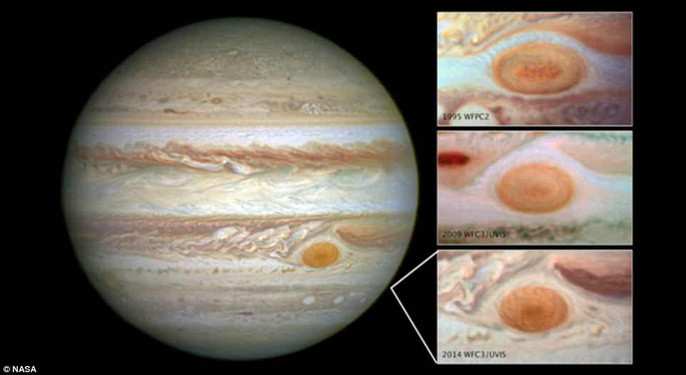
Red dots on Jupiter - Super Red Great storm - is gradually shrinking in size - (photo: NASA).
Recently, NASA's Juno spacecraft just got close to the planet and sent many images. Thereby, scientists calculate and discover that g.
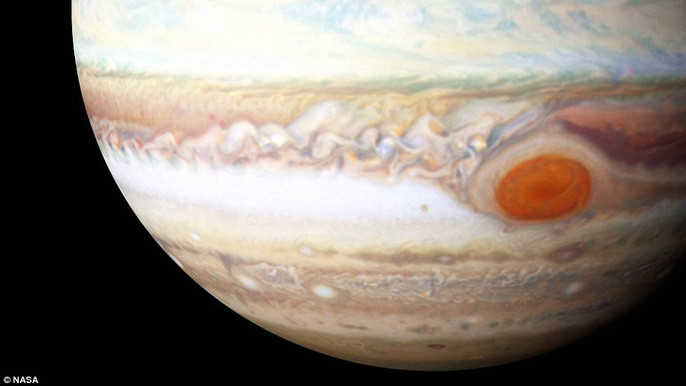
Super storms are getting smaller.(Photo: NASA).
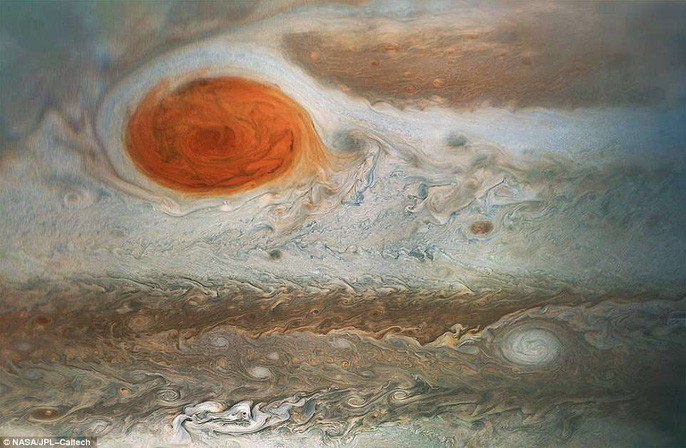
This super typhoon was first recorded in 1831. (Photo: NASA).
Super Typhoon Great Red Spot was first recorded in 1831. A measurement many years later (around the end of the 19th century) showed that the giant storm had a diameter of 56,000km, enough to swallow 4 Earths. side by side. However, in 2017, it is estimated that this diameter is only 16,000km, or 1.3 times the diameter of the Earth. So far, it has continued to be narrowed.
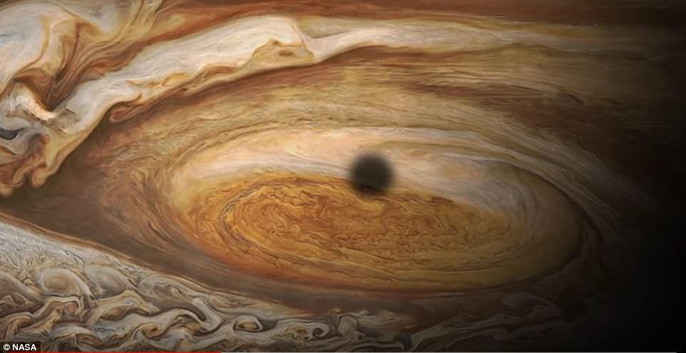
Close up of "super storm" in an extremely close approach of Juno - (photo: NASA).
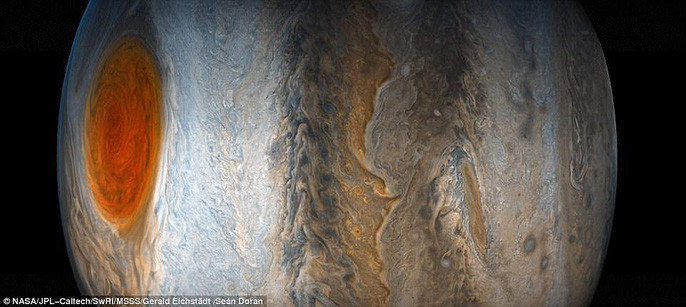
Super typhoon was many times bigger than the current one - (photo: NASA).
Since 2014, super typhoon is increasingly visible under the lens with orange red. Scientists have not made an official conclusion on this but guess that the chemicals in the storm are flying higher and are affected by ultraviolet radiation, so they look darker.

Since 2014, super typhoon is increasingly visible under the lens with orange red.(Photo: NASA).
NASA's Rick Cosentino, a member of Jupiter's research team, said that with this rate of decline, there may be many surprises happening in 5-10 years. While the Great Red Spot fades away, scientists hope that they will discover more exciting things when exploration devices are no longer impacted by super typhoons as they get too close.

Explorers Jupiter - unmanned device named Juno of NASA - (photo: NASA).
NASA also revealed in April 2018, Juno approached approached Jupiter again. However, the images it recorded have not been collected and published.
- Super dust storm 'devour' neighbor Earth?
- Close up of a devastating super typhoon landed in the United States
- Big storms destroy the world
- Decipher the secret behind super solar storm
- The 10 biggest storms recorded in history
- The destructive power of the storm
- The idea of beating super typhoons with US nuclear bombs
- The most intense super typhoons in the history of the Atlantic
- Swallow and the basic information about swallow
- How strong is a storm?
- 9 storms occur at the same time, experts warn of 'abnormal'
- Super typhoon 'monster' Ha Long smashes the strongest storm record in the world
 Van Allen's belt and evidence that the Apollo 11 mission to the Moon was myth
Van Allen's belt and evidence that the Apollo 11 mission to the Moon was myth The levels of civilization in the universe (Kardashev scale)
The levels of civilization in the universe (Kardashev scale) Today Mars, the sun and the Earth are aligned
Today Mars, the sun and the Earth are aligned The Amazon owner announced a secret plan to build a space base for thousands of people
The Amazon owner announced a secret plan to build a space base for thousands of people